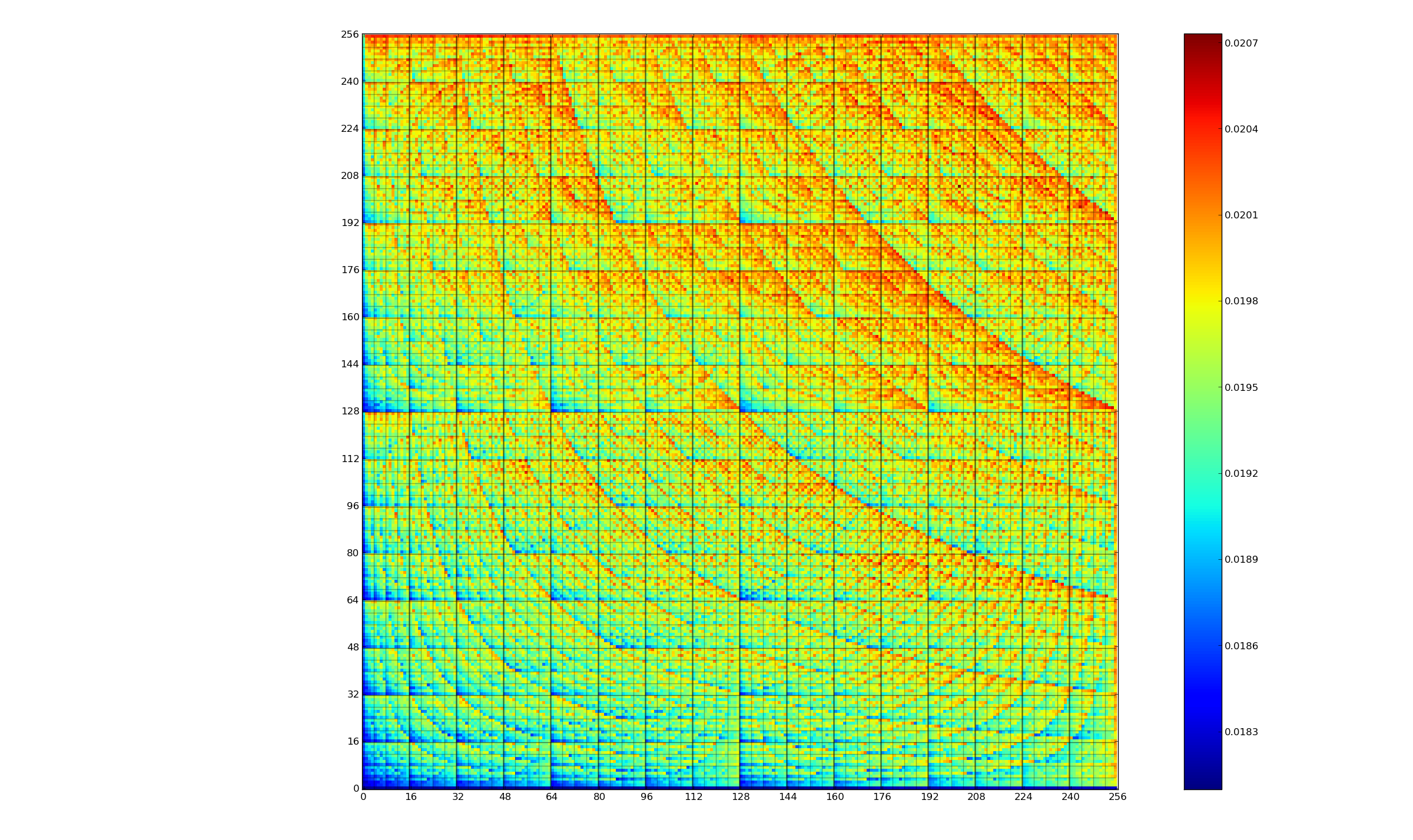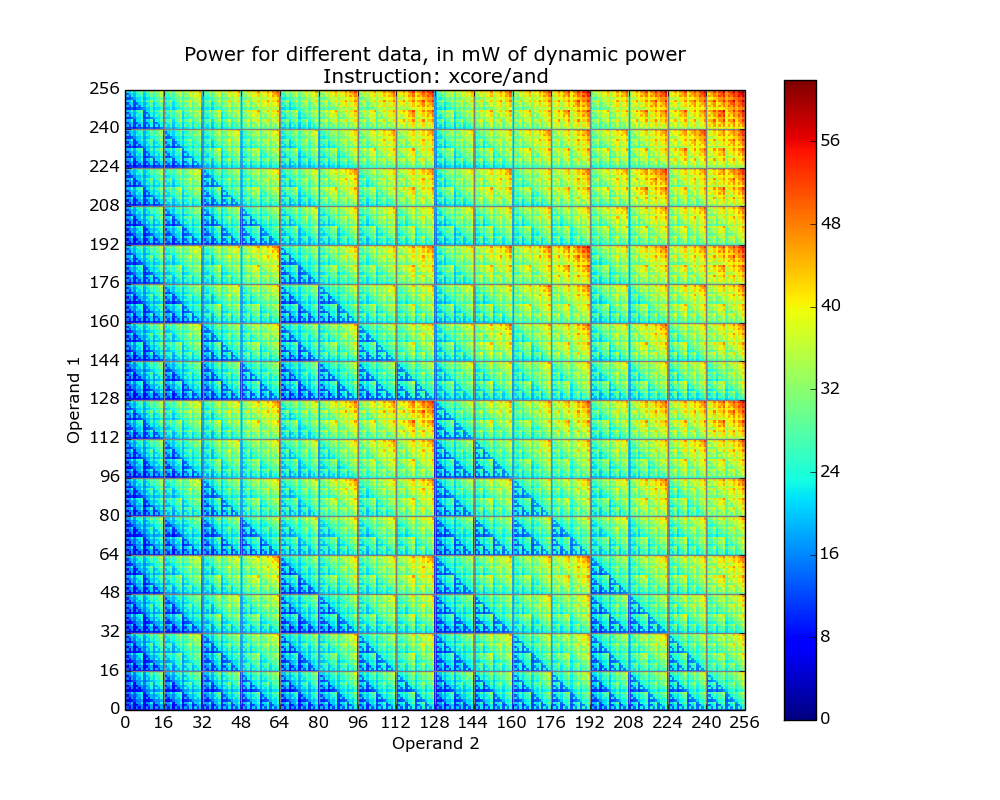Power consumed by different instruction operand value pairs
We are all used to the idea that program performance (e.g., cpu, storage and power consumption) varies across different input data values. A very interesting new paper illustrates how the power consumption of individual instructions varies as instruction operand values change.
The graph below (thanks to Kerstin for sending me a color version, scale is in Joules) is a heatmap of the power consumed by the 8-bit multiply instruction of an XMOS XCore Atmel AVR cpu for all possible 8-bit values (with both operands in registers and producing a 16-bit result). Spare a thought for James Pallister who spent weeks of machine time properly gathering this data; by properly I mean he took account of the variability of modern processor power consumption and measured multiple devices (to relax James researches superoptimizing for minimal power consumption).

Why is power consumption not symmetric across the diagonal from bottom left to top right? I naively assumed power consumption would be independent of operand order. Have a think before seeing one possible answer further down.
The important thing you need to know about digital hardware power consumption is that change of state (i.e., 0-to-1 or 1-to-0) is what consumes most of the power in digital circuits (there is still a long way to go before the minimum limit set by the Margolus–Levitin theorem is reached).
The plot below is for the bit-wise AND instruction on a XMOS XCore cpu and its fractal-like appearance maps straight to the changing bit-patterns generated by the instruction (Jeremy Morse did this work).

Anyone interested in doing their own power consumption measurements should get a MAGEEC Energy Measurement Kit and for those who are really hardcore the schematics are available for you to build one yourself.
Why is power consumption asymmetrical? Think of paper and pencil multiplication, the smaller number is written under the larger number to minimise the number of operations that need to be performed. The ‘popular’ explanation of the top plot is that the cpu does the multiply in whatever order the operand values happen to be in, i.e., not switching the values to minimise power consumption. Do you know of any processors that switch operand order to minimise power consumption? Would making this check cost more than the saving? Chip engineers, where are you?
A plug for the ENTRA project and some of the other people working with James, Kerstin and Jeremy: Steve Kerrison and Kyriakos Georgiou.
Recent Comments